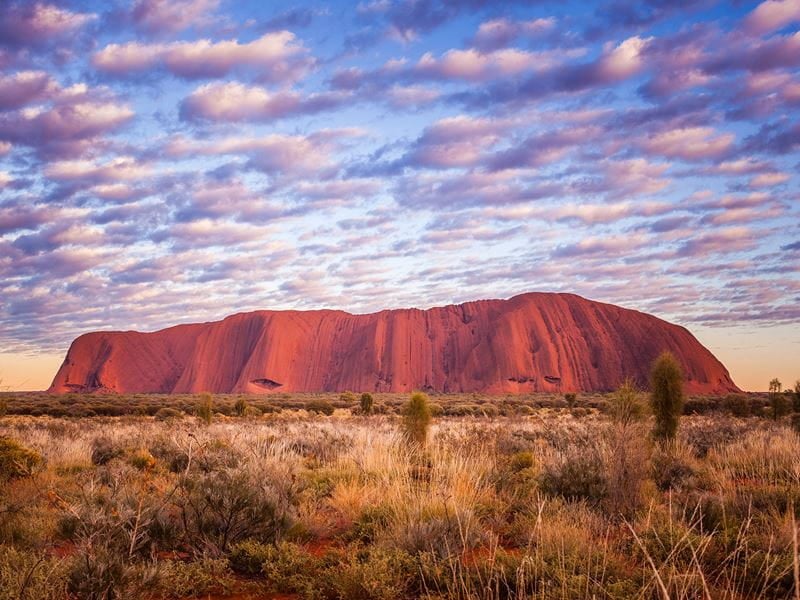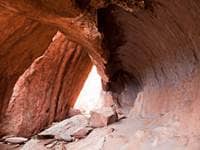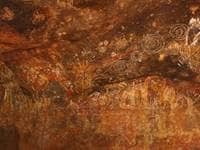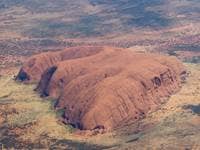
- Trending:
- Pope Leo Xiv
- |
- Israel
- |
- Trump
- |
- Social Justice
- |
- Peace
- |
- Love
The 100 Most Holy Places On Earth
Uluru





Associated Faiths:
Indigenous Anangu Tribes of Australia
Also visited by religious people of many traditions, but even more so by tourists (for non-religious reasons).
Accessibility:
The base is open to visitors, but you are not supposed to clime Ayers Rock. Setting foot upon the rock is reserved for ceremonial occasions, and the area around the rock is closed during the performance of those rituals. While some climb anyway, it is a great offence to the indigenous Anangu people (who have had legal possession of the rock since 1985) and infringements are punishable by fines. There is a Ulura-Kata Tjuta Cultural Center in the park that tourists can visit.
Annual visitors: 500,000
History
Uluru—nicked named “Ayers Rock” (after a 19th century premier of South Australia, Sir Henry Ayers)—is an approximately 600-million-year-old 1,142-foot-high sandstone monolith in Australia’s dessert center. With a circumference of 5.8 miles, this massive red monolithic red rock mesa has been sacred to the indigenous Anangu aboriginal tribe for some 10,000 years. In the Anangu language, “Uluru” means “abode of the ancestors.” This name was attributed to the rock because, according to one version of the Anangu creation account, their ancestors entered the land of Australia when sacred beings came up out of the depths of the earth and created all things—including humans and the various animals. As they did so, they created the area’s landscape in the process. So, Uluru (or Ayers Rock) is the first abode of the first people to dwell upon the face of the Australian continent.
The Uluru monolith is the second largest in the world. Mount Augustus, in Western Australia, is the only one larger than Ayres Rock. That being said, Mount Augustus does not have the same sacred mystique as Uluru and, thus, is much less famous than its “little sister.”
Ayres Rock has various sites which are sacred to the indigenous aborigines of the area. Some are reserved for men, and rites associated with the male gender. Others are reserved for use by women and for the performance of decidedly female rituals. In addition, there are some spots along the monolith which are used for more general rites, which include men and women. The Anangu hold that the various caves on the monolith each have a divine meaning and purpose—and specific rituals that are only performed in a given cave set aside for that very purpose. Because of the sacral nature of these caves and what takes place in them, photography in them is prohibited and entrance by non-Aboriginals is restricted. The caves have wall drawings which date back as early as 1,000 BCE. These drawings depict the various rites associated with the temple in which they are performed.
Because the Anangu people are the “possessors” of the rock, and because it is extremely holy to them, even they do not traverse the rock other than when engaging sacred rituals. During those rituals, the park is officially closed and, thus, non-abiogenies are not to touch or traverse Uluru. Sadly, many do anyway, climbing the rock and seeking access to the sacred caves. The Anangus feel that the “ants” (which is how they refer to “white tourists”) have a “disdain” for their culture, religion, and sacred sites—as evidenced by the fact that they visit when they should not and climb where they should not.
Religious Significance
Ancient mountains were the place one often went in order to get closer to God. The concept of the “sacred mountain” is common in many ancient traditions. Mount Sanai (in Judaism), Mount Kailash (in Hinduism), and even Mount Olympus (in Greek Mythology)—each of these stands as a testament to the doctrine of the “sacred mountain” and its widespread acceptance in cultures and religions of antiquity. Atop a mountain peak, one was perceivably closer to the divine, or to the divine realms. One was removed from the world and, thus, removed from the temptations which kept one from communion with the higher power. The numerous ancient worship sites “dotted” along the Uluru monolith serve to prove that for millennia the aboriginal Anangu have understood this to be a “sacred site.” As the center of creation for them, it is no less than their “Garden of Eden” and the former abode of the first humans and first animals ever to grace the earth. Consequently, the Aboriginals hold the site to be “sacred space” and a place in need of their protection—lest it be defiled by tourists who generally do not get the Uluru’s culture, religion, or reverence for this hallowed spot.
In addition to mountains as symbols, caves—such as those which dot the landscape of Ayres Rock—have their own ancient symbolism which is at play among those who occupy this “sacred site.” Whereas Mountains represent the masculine (or male) principle, caves represent the feminine. The cave was believed by the ancients to be the “womb of Mother Earth.” Thus, caves were traditionally the sites of initiation—as these caves are for the Anangu people. Initiates would enter a cave to receive “hidden” or “secret” knowledge. In doing so, they would symbolically let their old self “die,” as they were “reborn” through the sacred rites—leaving the cave as new person just as a baby leaves the womb as a new human.
Caves and their associated mountains were also seen by some ancient peoples as being associated with the universe. They were the cosmic center of all things; the heart of human existence; the omphalos. They were the place where gods and saviors were born or rose up. Ultimately, they were symbols for the center of God’s creative work. Thus, to be—as the Anangu people are—the possessors of these mountain caves is to be God’s “chosen people,” God’s “covenant people,” the center of the attention of the Divine. As a consequence, what happens there is “sacred” and the people who do the ritual work there are “holy,” set apart and chosen of God.
The Aboriginal Anangu people speak of the “Dreamtime.” This is their ancient “golden age”—the era when the earth’s inhabitants were created. According to the legend, the face of the planet was empty, dark, and flat. However, sacred beings (sleeping underneath the surface of the earth) awoke and made their way through the earth’s crust. As they roamed about, they created the various features of the landscape, including Uluru (or Ayers Rock). In addition, they created humans, animals, and all which sustain their life. Thus, for the Indigenous Anangu people, Uluru is a testament to creationism, and a monument to the existence of God. It stands as evidence of the divine origins of all things. Thus, they seek to protect the “sacred site” from the encroachment of “ants” who treat it in secular ways; and they are saddened that the message that we are all God’s creations is missed by so many who visit this site.








